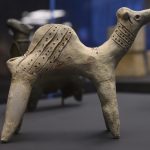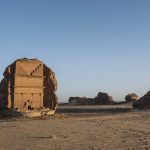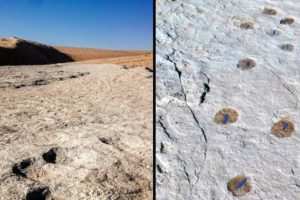
PALPA, Peru (Reuters) – Archaeologists using drones have discovered more than 25 geoglyphs etched into a swath of coastal desert in southern Peru near the Nazca Lines, a culture ministry official said Monday.
Most of the newly found geoglyphs, which include figures of a killer whale and a woman dancing, appear to have been made by the Paracas culture more than 2,000 years ago, hundreds of years before the Nazca people created similar giant drawings nearby, said Johny Isla, an archaeologist who heads the culture ministry’s conservation efforts in the region.
An additional 25 geoglyphs that had previously been spotted by local residents have also been mapped with drones, Isla said.
Drones “have allowed us to broaden our documentation and discover new groups of figures,” Isla said on a tour of the geoglyphs in the province of Palpa.
But unlike the Nazca lines, most of which can only be seen by flying above them, many of the so-called Palpa Lines were carved into hillsides and can be seen from below, Peru’s culture ministry said in a statement.
The geoglyphs created by the Nazca and Paracas cultures are striking reminders of Peru’s rich pre-Columbian history and are considered archeological enigmas, as no one knows for sure why they were drawn, or so large and for so long.
“In total we’re talking about 1,200 years in which geoglyphs were produced” in the region, said Isla.
Declared a UNESCO world heritage site in 1994, the Nazca Lines have faced damage by squatters looking for land to settle on and motorists veering off a nearby highway.
In 2014, environmental group Greenpeace apologized to Peru for staging a picture to protest dirty fuels at the Nazca geoglyph of a hummingbird, which government officials said was damaged as a result.
Isla said the Greenpeace incident prompted the culture ministry to ramp up efforts to protect archaeological sites in the region, helping lead to the new discoveries.
“We still haven’t walked among them, we’ve only taken pictures. This is the first stage of research,” Isla said.
Reporting by Reuters TV; Writing by Mitra Taj; Editing by James Dalgleish














